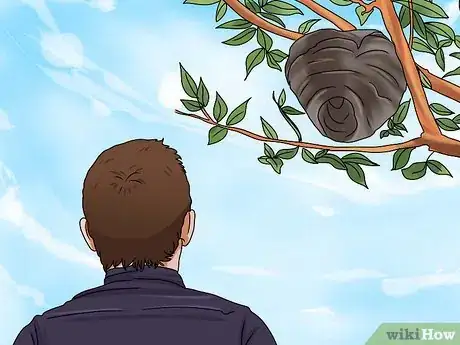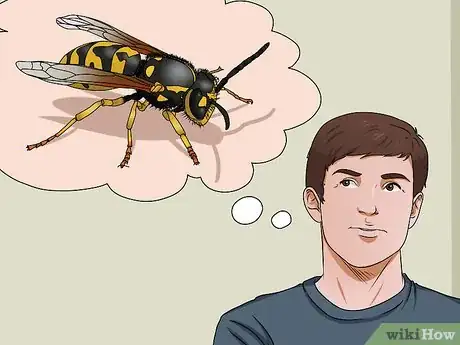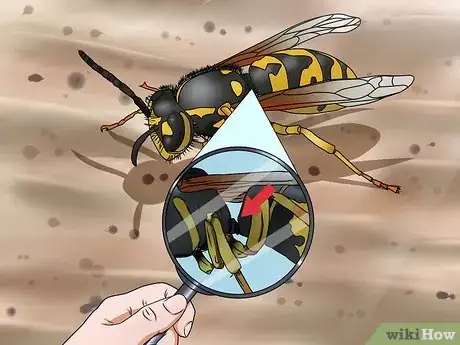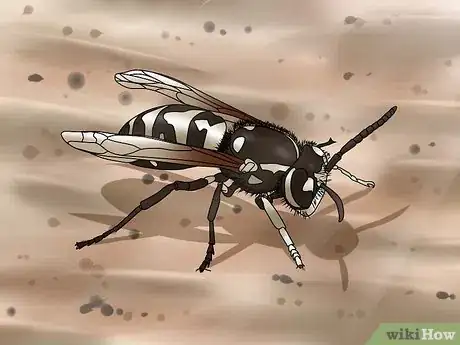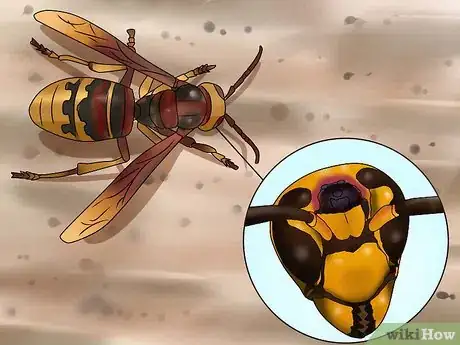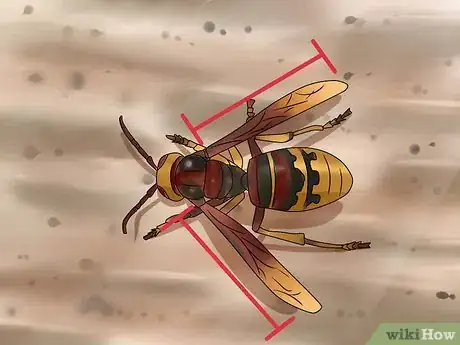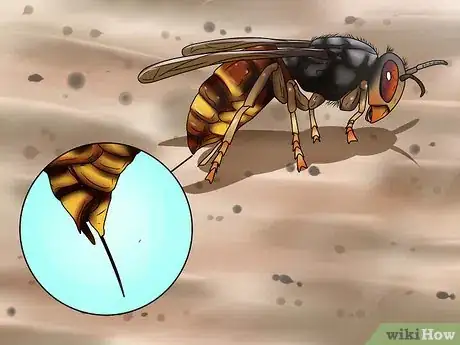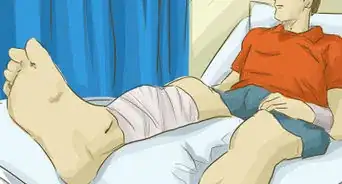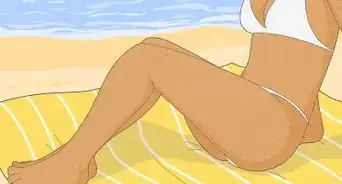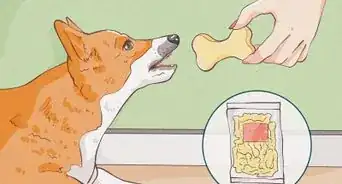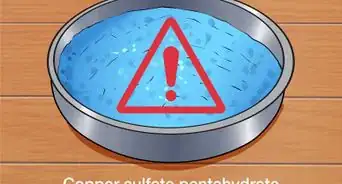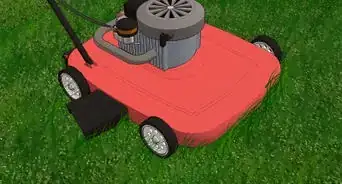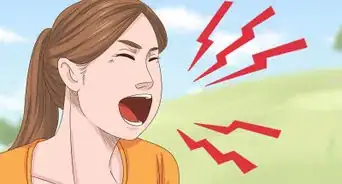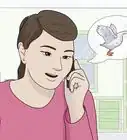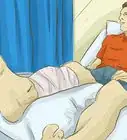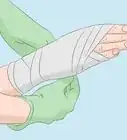This article was co-authored by Scott McCombe. Scott McCombe is the CEO of Summit Environmental Solutions (SES), a family-owned local pest solutions, animal control, and home insulation company based in Northern Virginia. Founded in 1991, SES has an A+ rating with the Better Business Bureau and has been awarded “Top Rated Professional,” and “Elite Service Award" by HomeAdvisor.
There are 8 references cited in this article, which can be found at the bottom of the page.
wikiHow marks an article as reader-approved once it receives enough positive feedback. This article received 46 testimonials and 88% of readers who voted found it helpful, earning it our reader-approved status.
This article has been viewed 983,815 times.
Belonging to the genus Vespa, hornets are the largest and most aggressive members of the wasp family (Vespidae) with the largest species being as long as 2.2 inches (5.5 cm). However, the European hornet is not aggressive and is unlikely to sting unless you are attacking it or its nest.While there are many insects that are falsely labeled as hornets, there are actually only about 20 species of true hornets in the world. What puts them in a class of their own is not only their aggressiveness but that the venom of some hornets, such as that of the Asian giant hornet, are not only extremely painful but can be deadly. The best way to avoid being stung is to know whether you are in the presence of hornets either by identifying their nest or the actual hornet by sight.[1]
Steps
Recognizing Hornet Nests
-
1Observe a gray, oval-shaped object made of paper. While it’s not actually paper, it is a paper-like substance made from hornet saliva and wood. The nest houses eggs and hornets are very protective of both their home and their eggs. Hence, you really don’t want to be caught near their nest lest they consider you a danger.[2]
- While it starts as a small, honeycomb-looking object, as the colony grows, the nest expands to an oval shape resembling a football, stalactite, or inverted teardrop.
- This means that just identifying the structure can help you narrow down your insect neighbors but does not determine exactly what type of insect they are.
- Paper wasps also use a paper-like building material but their nests have no paper envelope that covers and protects the nest.[3]
-
2Look for the nest outside and up high in a covered area. Hornets build their nests in outdoor areas and usually high above ground, such as in trees, on a utility pole, or in thick shrubs. They will also build nests on the eaves of roofs and under decks.[4]
- Often you won’t see their nest until autumn when the leaves fall off and reveal the nest hidden within. By this time most of the hornets will be dead or dying, leaving only the queen to hibernate and live through the winter.
- In contrast, yellow jacket nests can often be found either close to the ground, underground, or inside any loose structure they can find, such as between the inner and outer walls of a house or even inside an old mattress.
- Some wasps that build nests high above the ground are incorrectly called hornets. The North American bald-faced hornet (Dolichovespula Maculata) is actually a species of wasp, as is the Australian hornet (Abispa ephippium), which is a subspecies of the potter wasp.
Advertisement -
3Estimate the number. Hornet colonies can have as many as 700 members. If the nest is significantly larger, one you think contains thousands of members, odds are you are looking at a yellow jacket nest. So keeping a close eye – from a distance – is key to knowing whether they are hornets or yellow jackets.
- Whether the nest is small or large, the way to handle the nest is to call in professionals. These people will need to know how big the nest is so the more information you can give them the better equipped they will be to handle it.
Identifying a Hornet By Sight
-
1Observe distinguishing characteristics. A hornet, like a wasp, has a thin waist between the thorax and the abdomen. This physical trait is known as being "wasp-waisted." It distinguishes them from the bee family, which have thick waists between the thorax and abdomen.
-
2Look for black and white coloring. Unlike bees, which have a brownish-yellow and black coloring, and some other members of the wasp family, such as the yellow jacket and mud dauber, which have a bright yellow and black coloring, most hornets are black and white.[5]
- Some species, however, such as the yellow hornet and the European hornet, are colored differently so it’s important to also look at the insect’s “waist.”
-
3Be aware of the size difference between a hornet and a wasp. One main difference between a hornet and a wasp, one that is easily recognizable either up close or at a distance, is size. For example, the only true hornet in the USA and Canada is the European hornet, which grows to be approximately 1-1.5 inches long. The maximum size for a paper wasp or yellow-jacket is 1-inch and usually, they are smaller than that.[6]
- Hornets, like wasps, have six legs and two pairs of wings.[7]
-
4Distinguish further hornet body characteristics. Unlike other members of the wasp family, the section of the abdomen closest to the thorax, called the gasters, is more rounded in a hornet than in other wasps. This makes it the first area to look when needing further clarification as to whether you are looking at a wasp or a hornet.
-
5Notice the wider width of the head behind the eyes. Called the vertex, this section is wider, in terms of the overall body size, in hornets than in other members of the wasp family.
-
6Look to see if the wings are folded down the length of their bodies. While some other members of the wasp family fold their wings down the length of their bodies when resting, it is another indicator to help you narrow down whether you are looking at a hornet or a wasp.
-
7Note the absence of barbs on the stinger. Bee stingers are barbed, causing them to tear out of the bee's abdomen when the target is stung, which also takes the bee's life. In contrast, hornets, like other members of the wasp family, have barbless stingers, allowing them to sting repeatedly without losing their stingers.[8]
- While this helps differentiate between a hornet or wasp and a bee, if you’re this close you may want to walk quietly away.
Warnings
- If a hornet is around you, walk away. Don’t swing or swipe at it or agitate it in any way. If it feels attacked, it will attack back and signal the others in the nest to attack as well.⧼thumbs_response⧽
- An allergy to bee sting venom does not automatically mean you're also allergic to wasp or hornet venom; if in doubt, get tested for an allergic reaction to wasp venom before venturing into an area hornets frequent.⧼thumbs_response⧽
- Through communication by pheromones, hornets have the ability to sting a target en masse, making them a formidable and fearsome foe.⧼thumbs_response⧽
- If you must kill a hornet, do so as far away from its nest as possible and stay away from its nest after doing so. The alarm pheromone that hornets give off when attacked could possibly transfer to your skin or clothes and will attract other hornets to you until it is washed or worn away.⧼thumbs_response⧽
- Hornets are attracted to human sweat and running. So if you run from them, they will chase you and, more than likely, send off a pheromone signaling the others to chase you as well.⧼thumbs_response⧽
- Because hornets are members of the wasp family, if you are allergic to the venom in wasp stings, you will also be allergic to the venom of hornet stings. If you are going to be in an area where you know there are hornets, take along an epinephrine (adrenaline) injector kit, such as an EpiPen, and go to the hospital as quickly as possible after being stung.⧼thumbs_response⧽
- Painful or dangerous stings are due to the great percentage of acetylcholine.⧼thumbs_response⧽
- Don't go near a hornets’ nest or threaten hornets. It is best to leave them alone.[10]⧼thumbs_response⧽
References
- ↑ http://www.orkin.com/stinging-pests/hornets/
- ↑ http://www.orkin.com/stinging-pests/hornets/hornet-nests/
- ↑ http://www.orkin.com/stinging-pests/wasps/difference-wasps-hornets/
- ↑ http://www.orkin.com/stinging-pests/hornets/hornet-nests/
- ↑ http://www.diffen.com/difference/Hornet_vs_Wasp
- ↑ http://www.orkin.com/stinging-pests/wasps/difference-wasps-hornets/
- ↑ http://www.diffen.com/difference/Hornet_vs_Wasp
- ↑ http://www.pestcontrolcanada.com/Health%20Hazards/Bee%20Stings%20Wasp%20Stings%20Hornet%20Stings.htm
- ↑ http://bugguide.net/node/view/7229
- ↑ Scott McCombe. Pest Control Specialist. Expert Interview. 19 November 2019.
About This Article
To identify a hornet, examine the insect for 4 wings and 6 legs, a thin waist between the thorax and the abdomen, and a rounded abdomen. You can also look at the insect’s head behind its eyes, which will be wider in a hornet than in a wasp. If you’re close enough to examine the stinger, look for barbs, which indicate that the insect is a bee. Check for black-and-white coloring, as well, although there are some hornets with different coloring. If you need help identifying a hornet’s nest, read on!

